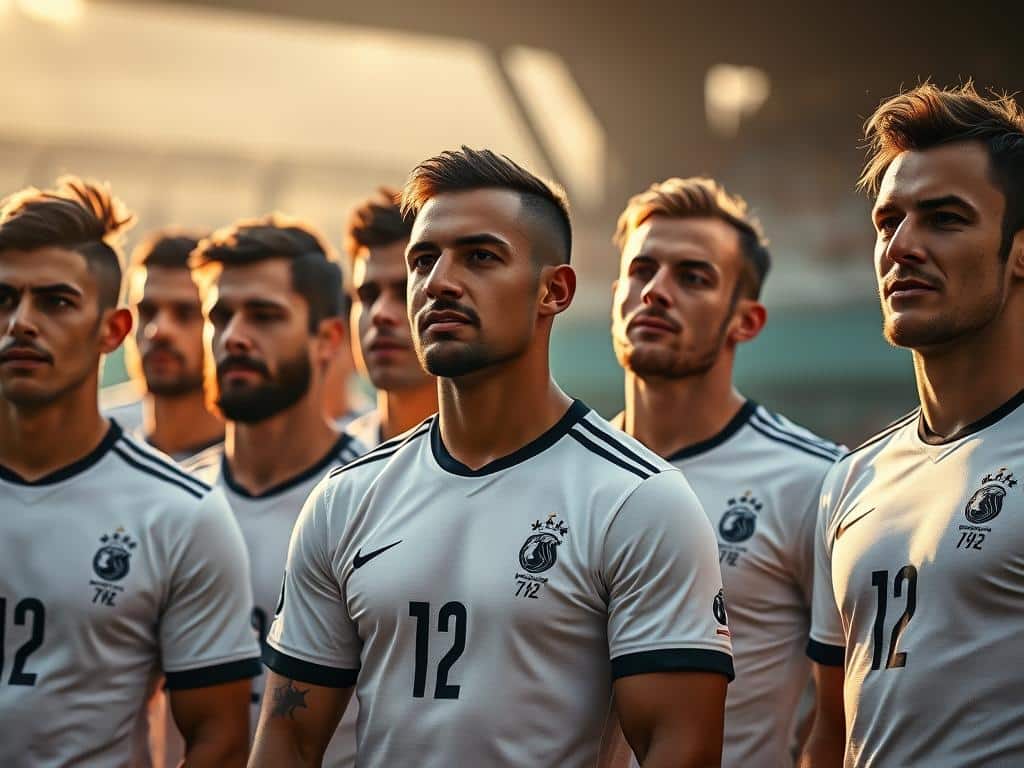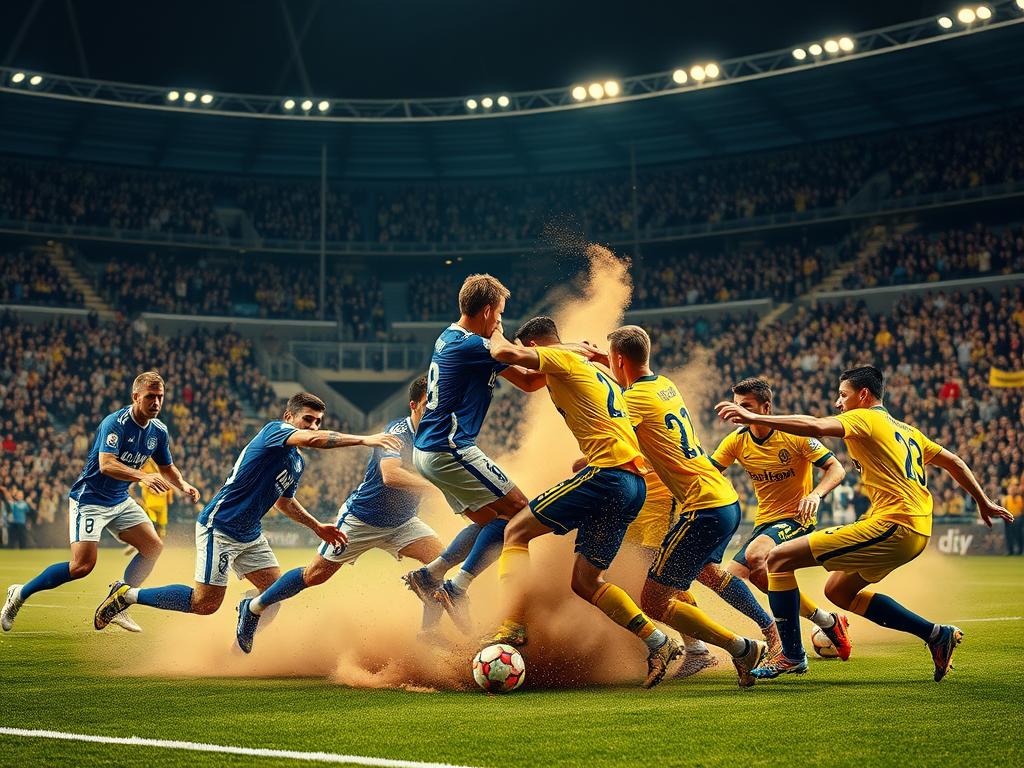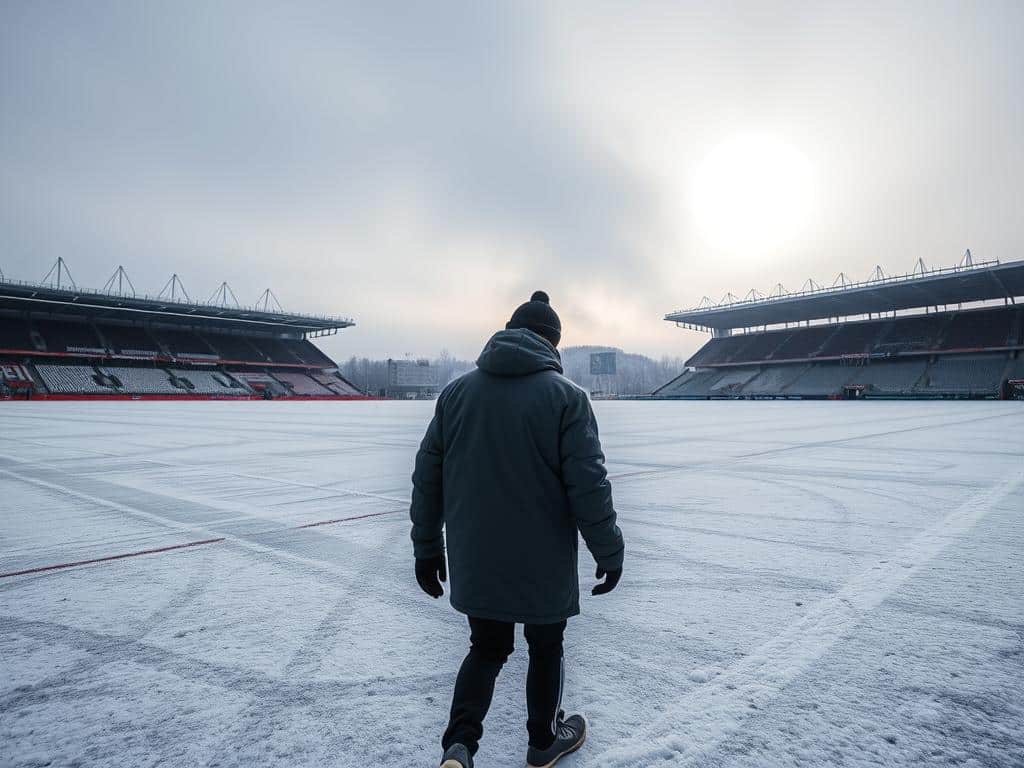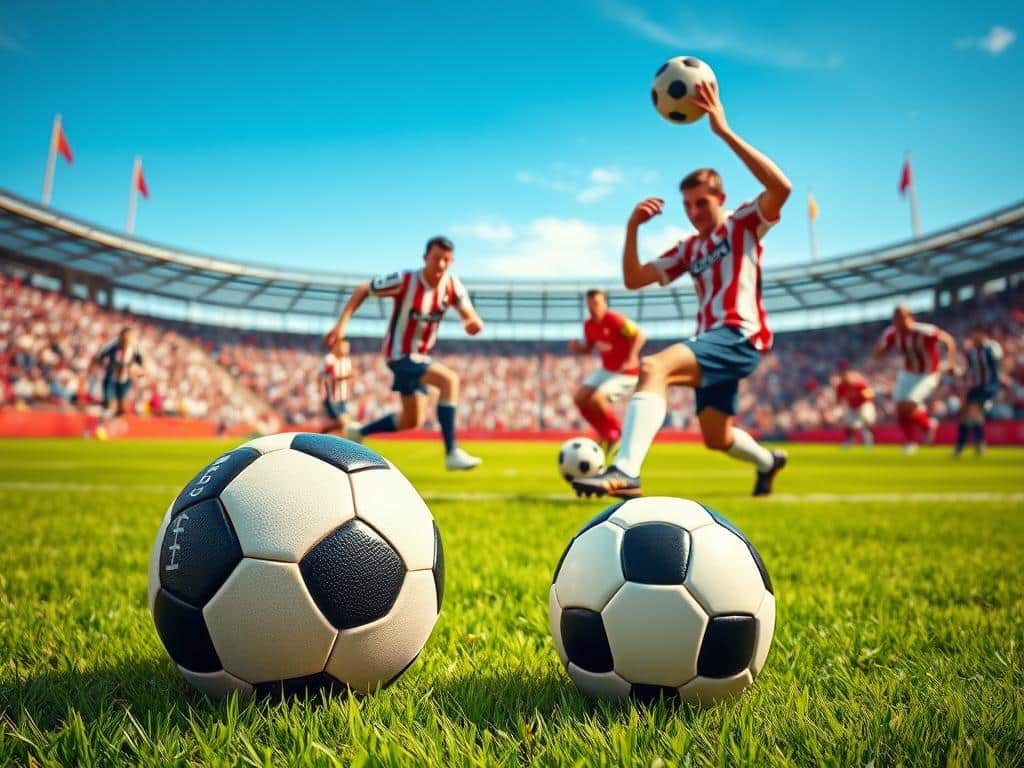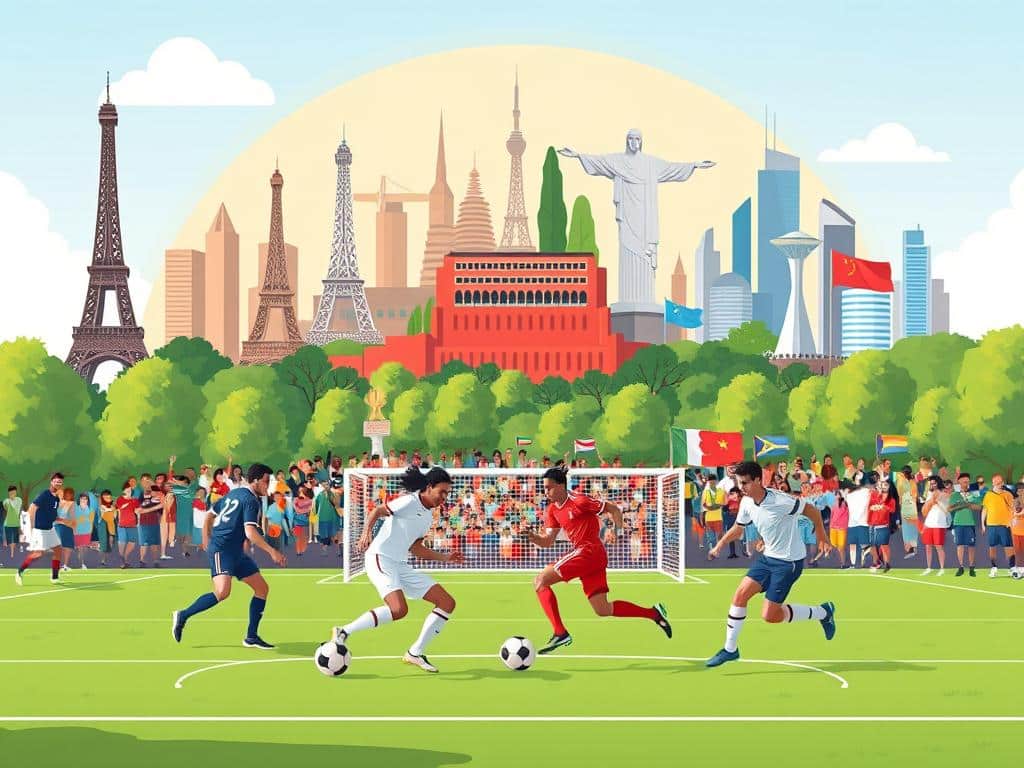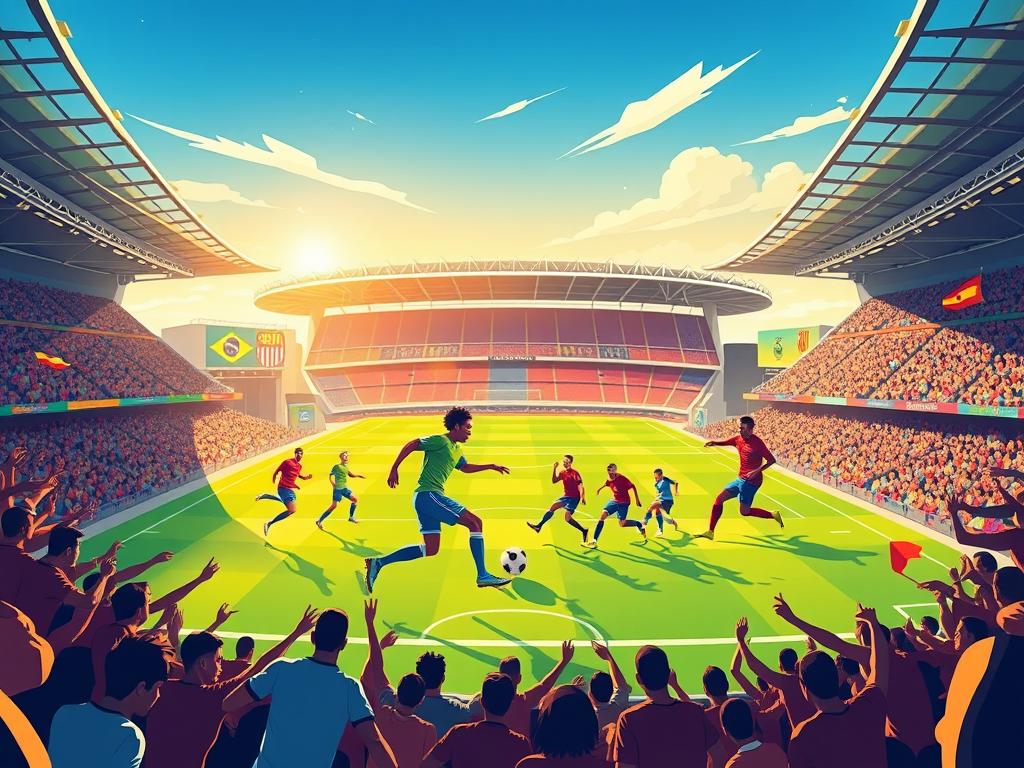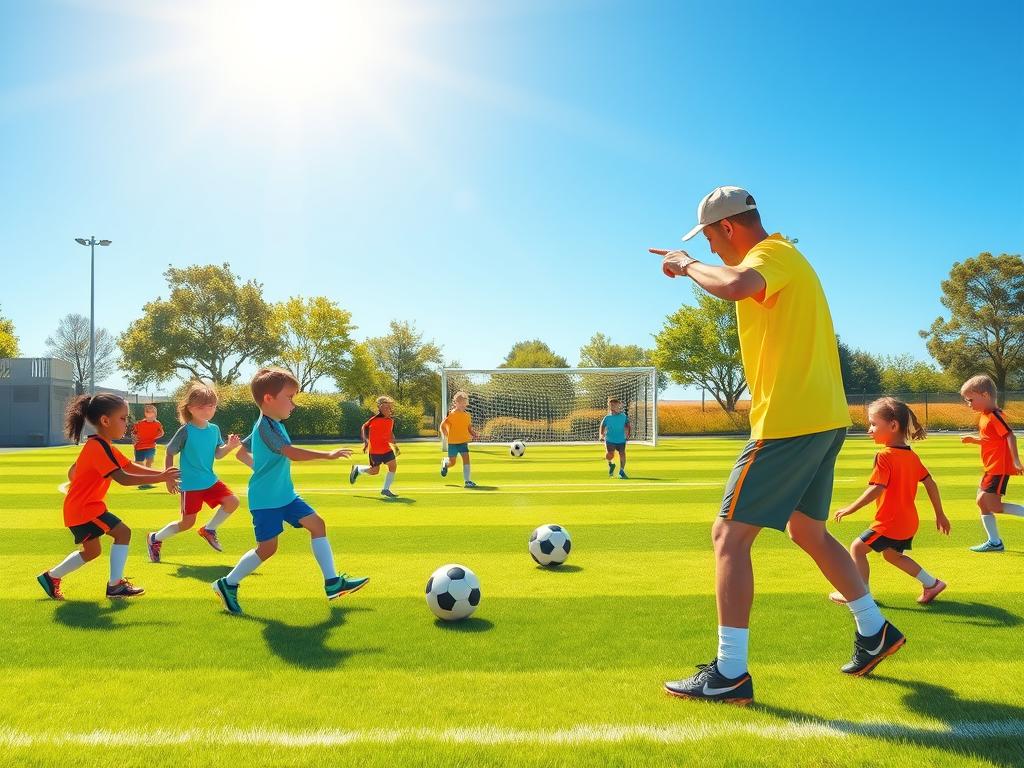Did you know that Les Bleus have won two World Cup titles and two European Championships? Their journey from underdogs to champions is one of soccer’s greatest stories.
From the 1950s to today, this squad has produced legends like Zidane, Platini, and Mbappé. Each era brought thrilling moments that fans still celebrate.
Their success isn’t just luck. Smart coaching, home-field advantage, and raw talent shaped their legacy. Whether you’re a casual fan or a die-hard supporter, their story will inspire you.
Ready to dive into the magic behind their victories? Let’s explore what makes them unforgettable.
What Defines France’s National Soccer Team Golden Generation?
Trophy wins alone don’t define a historic era—here’s what does. Golden generations blend silverware, iconic stars, and cultural resonance. For fans, these squads become timeless.
The Blueprint for Football Greatness
Three markers separate good teams from legendary ones. First, trophies in major tournament play. Second, players who redefine roles. Third, a legacy that inspires future stars.
France’s 1984 Euro win checked all boxes. Platini’s nine goals and the “Magic Square” midfield dazzled fans. It wasn’t just a win—it was a statement.
How France Stacks Up Against Giants
With 13 semifinal appearances, they rival Brazil and Germany. But their peaks were higher. The 1998-2000 squad remains unmatched: World Cup and Euro glory back-to-back.
Germany’s youth system churns out talent steadily. France’s approach? Bursts of brilliance. The 2018 World Cup mixed veterans like Pogba with teen phenoms like Mbappé.
Zidane’s 2006 finale showed heart, even in defeat. That’s the magic of a true golden age—it’s felt long after the final whistle.
The Rise of France’s First Golden Generation (1950s)
Before Zidane and Mbappé, there was Kopa and Fontaine—the original trailblazers. Their partnership redefined attacking football, blending creativity and lethal finishing. The 1958 World Cup became their stage to shine.
Raymond Kopa and Just Fontaine’s Historic Partnership
Kopa’s vision and Fontaine’s precision made them unstoppable. Kopa, a playmaker ahead of his time, delivered passes that sliced defenses. Fontaine, the ultimate finisher, turned those chances into goals.
Their 4-3-3 formation was revolutionary. Kopa dropped deep, while Fontaine led the line. This setup dominated the group stage and beyond.
1958 World Cup: France’s Breakthrough Season
Fontaine’s 13 goals in a single tournament still stands as a record. His four-goal thriller against West Germany in the third-place match sealed their legacy.
- Kopa’s playmaking: Dribbled past defenders and created space like few others.
- Fontaine’s record: Scored in every game, including a hat-trick vs Paraguay.
- Semifinal heartbreak: Pelé’s Brazil outclassed them, but the fight inspired a nation.
Political tensions disrupted their 1960 Euro prep, halting momentum. Yet, their 1958 run proved France could compete with the best.
Michel Platini and the Magical 1980s Squad
What happens when four midfield geniuses unite? Les Bleus found out in 1984, as Michel Platini led a revolution. Their blend of creativity and precision changed European football forever.
The “Magic Square” midfield that dominated Europe
Platini, Giresse, Tigana, and Fernández formed football’s ultimate diamond. Their movement created passing lanes defenses couldn’t track. You’d see Platini drop deep, then surge forward to finish attacks.
This wasn’t just a midfield—it was a tactical blueprint. The quartet combined for 14 goals during Euro 1984, with each player understanding their role perfectly. Defenders faced nightmares trying to mark them.
Euro 1984 triumph: France’s first major trophy
Platini’s nine goals set a record that still stands. His hat-trick against Belgium showed why he was Europe’s best. When the final whistle blew against Spain, France had their first major international title.
Winning at home made it sweeter. The 5-0 semifinal demolition of Belgium proved their attacking power. But injuries in 1986 halted their World Cup dreams, showing how fragile dominance can be.
Compare Platini’s vocal leadership to Zidane’s calm style. Both worked perfectly for their eras. That 1984 squad didn’t just win—they made fans believe magic exists on the pitch.
The 1998-2000 Golden Era: World Cup and Euro Glory
Few squads in history have captured hearts like the 1998-2000 French team. Their blend of flair, grit, and multicultural unity rewrote football’s record books. From Zidane’s magic to Deschamps’ steady hand, this was a dynasty built on clutch moments.
Zinedine Zidane’s Emergence as a Global Superstar
Zinedine Zidane wasn’t just a player—he was poetry in motion. His semifinal rainbow flick against Croatia showcased audacity few dared. But the 1998 World Cup final cemented his legend: two towering headers against Brazil silenced critics.
Teammates called him “Zizou,” a nickname that became synonymous with genius. Whether orchestrating attacks or scoring vital goals, he elevated big games. His calm under pressure mirrored the squad’s confidence.
Didier Deschamps’ Leadership as Captain
Behind every great team is a captain who sets the tone. Didier Deschamps organized the “Black-Blanc-Beur” squad—a melting pot of cultures that became France’s strength. His tackles and tactical awareness anchored the midfield.
- Master tactician: Shifted formations mid-tournament (3-5-2 to 4-3-2-1) to exploit opponents.
- Unifier: Bridged veterans like Blanc with young stars like Henry.
- Clutch performer: Led by example in Euro 2000’s dramatic final (Wiltord’s 93’ equalizer).
The 2001 Confederations Cup win wasn’t just another trophy—it capped a historic run. Barthez’s penalty saves, Henry’s rise, and Zidane’s flair made this era unforgettable. For fans, it wasn’t just winning; it was how they won.
Tactical Evolution of France’s Golden Generations
Great football teams don’t just win—they evolve. Les Bleus mastered this through strategic formation shifts that defined eras. Their adaptability in major tournaments separated good squads from legendary ones.
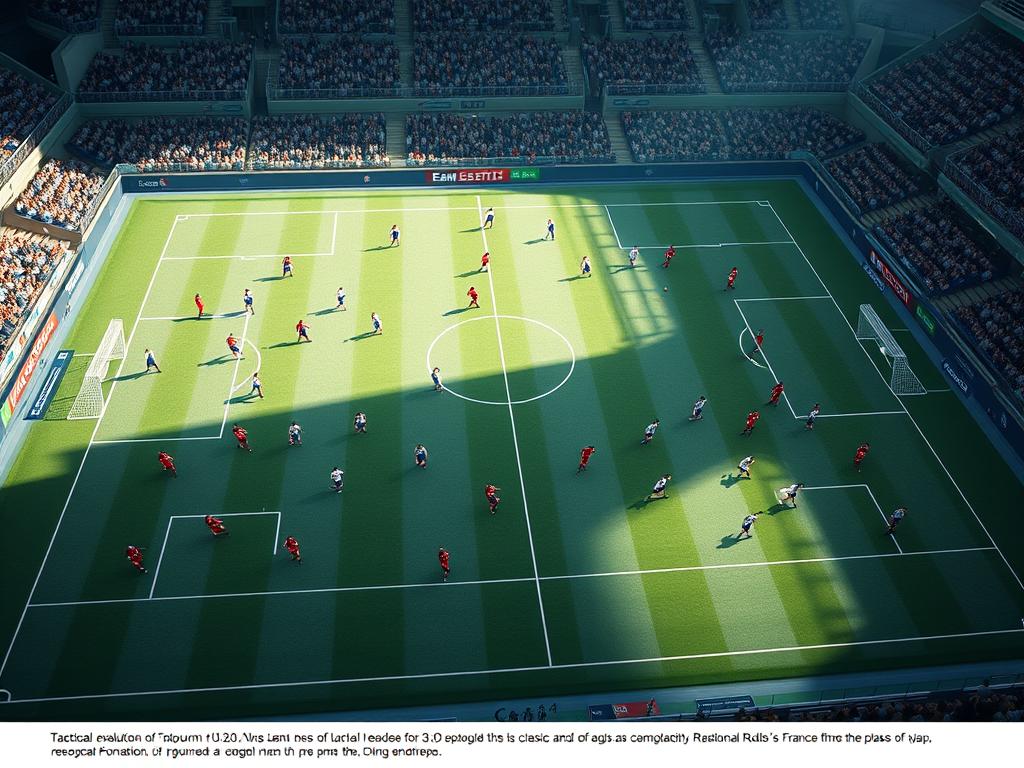
From 4-3-3 to 4-2-3-1: Key formations through the years
The 1980s “Magic Square” midfield revolutionized attacking play. Platini’s diamond shape inspired modern triangles used by elite clubs today. By Euro 1984, this fluid system produced nine goals from midfielders alone.
Fast forward to 2018, and the 4-2-3-1 became Deschamps’ blueprint. This setup unleashed Mbappé’s speed while shielding the backline. The double pivot allowed Pogba creative freedom—proving formations must serve the team’s strengths.
Defensive solidity as France’s trademark
Clean sheets win knockout matches as much as goals do. The 1998 squad conceded just twice in the entire World Cup knockout stage. Thuram and Desailly’s partnership set the standard—physical yet intelligent defending.
Modern fullbacks like Pavard inherited Lizarazu’s dual role: defensive steel with overlapping runs. Deschamps’ 2018 block conceded only six goals across seven matches. Four shutouts showed how defense fuels championship runs.
Whether it’s Makelele’s 2006 midfield shield or Varane’s aerial dominance today, this team transforms defenders into architects of victory. Their tactical DNA blends innovation with timeless fundamentals.
Parc des Princes: The Historic Home of French Football
Few stadiums carry the weight of history like the Parc des Princes. Since 1905, its hallowed soil has hosted legends and unforgettable moments. From World Cup clashes to Euro triumphs, this is where football magic comes alive.
Iconic Matches at France’s Legendary Stadium
The 1938 World Cup quarterfinal against Italy marked its first major tournament match. Fans still talk about the electric tension that day. Decades later, the 1984 Euro final saw des Princes erupt as Platini lifted the trophy.
Modern eras shine too. Mbappé’s 2019 Champions League hat-trick for PSG proved the stadium still breeds greatness. The roar after his third goal? Pure goosebumps.
How Home Advantage Shaped Golden Eras
Renovations in 1975 transformed the layout, amplifying crowd noise. When fans chant “Allez Les Bleus,” the acoustics turn the stands into a thunderstorm. Opponents crumble under the pressure.
Compare this to Stade de France’s colder vibe. At Parc des Princes, every pass feels like it’s fueled by 50,000 hearts. That energy propelled the 1984 squad to glory—right down to the pitch invasion celebration.
Today, PSG’s dominance means fewer national team games here. But when des Princes hosts, history whispers in the wind. This isn’t just a venue—it’s the soul of French football.
Key Players Who Defined France’s Golden Generations
Behind every golden era stand players who redefine what’s possible. From unstoppable scorers to unbreakable defenders, these legends shaped history. Let’s celebrate the icons who made their mark.
Thierry Henry: The Arsenal Flyer Turned Record Breaker
With 51 goals, Henry remains Les Bleus’ all-time top scorer. His 2010 strike against South Africa broke the previous record, sealing his legacy. Fans still debate his prime: Was it Arsenal’s speed demon or Barcelona’s clinical finisher?
Henry’s versatility stunned defenders. Cut inside from the left, and he’d curl it top corner. Play him centrally, and he’d outmuscle anyone. Few could match his blend of flair and efficiency.
Lilian Thuram: The Wall That Never Cracked
Thuram’s 142 caps tell half the story. His 1998 World Cup semifinal brace vs Croatia? Legendary. But his real genius was shutting down stars like Ronaldo—no fancy tricks, just perfect positioning.
- Defensive IQ: Anticipated passes like a chess master.
- Big-game composure: Scored twice when his team needed it most.
- Leadership: Organized the backline with calm authority.
Wing Wizards and Unsung Heroes
Robert Pirès brought elegance to the flank, while Franck Ribéry added chaos. Both mastered the art of the killer cross. And let’s not forget Bixente Lizarazu—his 12-year international career defied time.
Even controversies shaped eras. Benzema’s 2018 exclusion sparked debates, proving how one player’s absence can ripple through history. That’s the power of a golden generation—every piece matters.
2006 World Cup: The Last Dance of Zidane’s Generation
Italy vs France in 2006 wasn’t just a final—it was theater. The 2006 World Cup climaxed with drama few could predict. From Zidane’s brilliance to his shocking exit, this tournament left fans breathless.
The road to Berlin’s controversial night
France’s journey began with doubters. After barely qualifying, they flipped the script in knockout stages. Zidane’s quarterfinal masterclass against Brazil showed his timeless class—one flick to set up Henry’s winner.
Midfield duo Vieira and Makelele controlled games like conductors. Their tackles fueled counterattacks, while young Ribery tormented Spain with his speed. This blend of youth and experience peaked at the right time.
A legacy sealed in unexpected fashion
Zidane’s golden ball award proved his tournament dominance, even after suspension. That headbutt? It overshadowed his earlier penalty coolly chipped past Buffon. Materazzi’s provocation tactics worked, but couldn’t erase Zidane’s magic.
- Unlikely heroes: Thuram’s semifinal clearance vs Portugal saved their run
- Heartbreak: Trezeguet’s missed penalty in the shootout hit the crossbar
- Changing guard: Post-2006, veterans retired, exposing a talent gap
That Berlin night marked an era’s end. For 110 minutes, Zidane danced his last dance—then walked past the trophy without a glance. Perfectly imperfect, like his career.
France’s Golden Generation in Major Tournaments
When the pressure rises, true champions shine—Les Bleus’ golden eras prove it. Their 16 World Cup appearances and European battles reveal a squad built for the biggest stages. From last-minute winners to penalty heartbreak, their story is written in tournament lore.
World Cup performances through the decades
The 1982 semifinal against West Germany was pure drama. A 3-3 thriller ended in overtime agony, but the fightback inspired a nation. Fast forward to 2006: Zidane’s aging squad defied odds, reaching the final with grit.
2018 flipped the script. With an average age of 26, they became the youngest champions since Brazil’s 1970 icons. Mbappé’s speed and Pogba’s vision defined a new era. Even in 2022’s penalty loss to Argentina, their resilience—and Mbappé’s hat-trick—stole headlines.
European Championship records and milestones
Euro 1984 was Platini’s masterpiece. Nine goals in five games? Unmatched. His leadership turned a group stage cruise into a trophy lift. Two decades later, the 2000 squad made history as the first to hold both the World Cup and Euros simultaneously.
Heartbreak came in 2016. Eder’s extra-time winner for Portugal crushed dreams, but the run showcased Griezmann’s brilliance. Whether lifting trophies or battling to the wire, these tournaments cemented their legacy.
The 2018 Renaissance: A New Golden Generation Emerges
Speed, strategy, and unity propelled Les Bleus back to glory. Twelve years after Zidane’s final bow, a fresh wave of talent conquered the FIFA World Cup. This wasn’t just victory—it was a masterclass in modern football evolution.
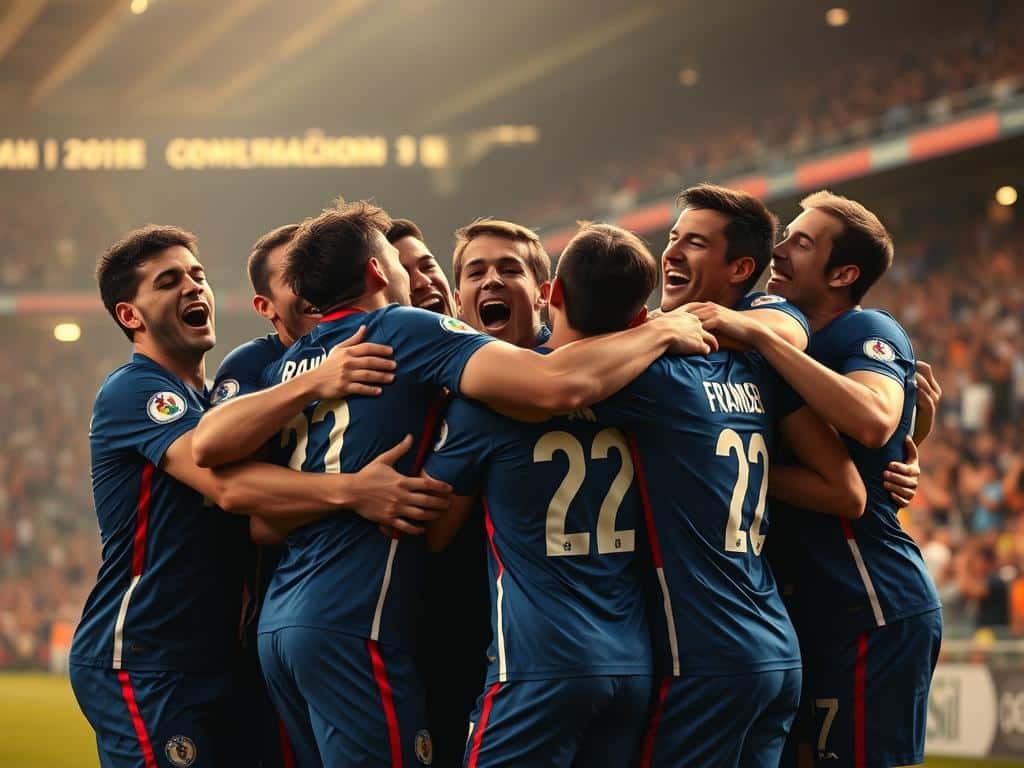
Kylian Mbappé’s breakout tournament
At 19, Mbappé became the second teenager ever to score in a World Cup final—joining Pelé’s legendary 1958 feat. His explosive pace against Argentina shattered defenses, including that stunning solo run for the 4-2 clincher.
What set him apart? Lightning acceleration combined with ice-cool finishing. When he netted against Croatia in the final, you could feel the electricity—this was football’s next global icon arriving on the biggest stage.
Didier Deschamps’ transformation as coach
The 1998 captain returned as a tactical innovator. His mid-tournament switch to a 4-2-3-1 formation unlocked Pogba’s creativity while Kanté shielded the backline. This flexible system delivered:
- Defensive mastery: Umtiti’s semifinal header vs Belgium came from a rehearsed set-piece
- Attacking flair: Pavard’s volley against Argentina won Goal of the Tournament
- Goalkeeping heroics: Lloris’ point-blank save vs Uruguay preserved their clean sheet
Griezmann’s dead-ball brilliance (3 goals, 2 assists) showcased Deschamps’ attention to detail. But the real triumph? Recreating 1998’s multicultural unity—this team embodied modern France with players from 12 different origins.
When the final whistle blew in Moscow, history had been made. The 2018 squad didn’t just win—they announced football’s newest golden era with style, substance, and Mbappé’s megawatt smile.
Comparing France’s Golden Generations
Every era of football greatness has its own signature style—let’s break down France’s best. Whether it’s silky midfield play or rock-solid defense, each golden generation carved its path to glory. Here’s how they stack up.
1980s vs 1990s: Style and Substance
Platini’s 1980s squad was a symphony. The “Magic Square” midfield wove passes like artists. Giresse and Tigana turned small spaces into scoring chances. Finesse ruled.
The 1990s flipped the script. Zidane added physicality—his headers in the 1998 final stunned Brazil. Deschamps anchored the defense with tackles that echoed across stadiums. Beauty met brawn.
2000s vs 2010s: Different Paths to Success
Post-2006, injuries and retirements left gaps. The 2010s rebuilt with youth. Mbappé’s 2018 speed mirrored Henry’s prime, but this team prioritized defense first. Varane and Kanté became walls.
Sponsors shifted too. Adidas’ classic stripes fit the 1980s flair. Nike’s 2018 kit mirrored modern minimalism—just like Deschamps’ no-nonsense tactics.
- Defensive mastery: Thuram’s 1998 dominance vs Pavard’s 2018 volleys.
- Media: 1998’s press blackout vs 2018’s social media buzz.
- Global reach: 1980s Ligue 1 stars vs 2018’s Premier League exports.
France’s Youth Development System
France’s secret weapon isn’t just stars—it’s the factory that builds them. For decades, their academies have turned raw talent into World Cup winners. At the heart of it all? Clairefontaine, the legendary hub that’s shaped icons like Henry, Thuram, and Mbappé.
How Clairefontaine Redefined Talent Pipelines
Opened in 1988, Clairefontaine became football’s Ivy League. Its “10,000-hour rule” philosophy drills fundamentals into young players. By blending technical drills with mental resilience, the academy birthed a team of thinkers, not just athletes.
Mbappé’s rise epitomizes this. From INF (Clairefontaine’s youth wing) to Monaco’s debut at 16, his path was meticulously planned. The 2013 U20 World Cup win? A preview of the 2018 golden generation’s dominance.
From Local Pitches to Global Stages
Thirteen regional academies now mirror Clairefontaine’s model. The FFF’s club partnerships ensure no talent slips through—like Benzema, who honed his skills at Lyon before becoming a Galáctico. Contrast that with Anelka’s turbulent journey, and you see the system’s evolution.
Recent reforms added mental health support, proving development isn’t just physical. In sports, that’s the difference between burnout and brilliance. For France’s youth, the future isn’t just bright—it’s meticulously crafted.
Iconic Matches That Defined Golden Eras
Some games aren’t just played—they become legends. For Les Bleus, two matches stand above the rest as defining moments of their golden ages. The drama, skill, and sheer willpower displayed in these finals still give fans chills.
1998 World Cup Final: France vs Brazil
July 12, 1998, changed everything. The Stade de France erupted when Zidane buried two first-half headers past Brazil’s defense. His aerial dominance shocked the world—this was a playmaker outmuscling defenders twice his size.
Ronaldo’s mysterious pre-game seizure remains debated. Was it nerves or something deeper? Either way, Brazil’s star looked off all match. When Petit slotted the third goal in stoppage time, the party began. Blue confetti rained as Deschamps lifted the trophy.
Euro 2000 Final: The Dramatic Win Over Italy
Two years later, another final tested their limits. Down 1-0 in the 93rd minute, Wiltord’s equalizer sparked chaos. Was it offside? Replays show it was razor-close. Then came Trezeguet’s golden goal—a half-volley that sealed back-to-back trophies.
- Desailly’s red card forced tactical genius—Deschamps shifted to a 5-3-1 that somehow held firm
- Barthez’s mind games worked—he stared down Toldo before each penalty, psyching him out
- Thuram’s 1998 semifinal tackle saved their run—his recovery speed denied Šuker a clear winner
Compare the atmospheres: Paris’ 1998 fireworks vs Rotterdam’s tension in 2000. Both nights proved one truth—when the stakes were highest, this squad delivered. That’s what makes a true victory.
France’s Rivalries During Golden Periods
Rivalries fuel football’s greatest dramas—and France’s golden eras had plenty. These high-stakes matches tested their skill and heart, creating moments fans still debate today. From World Cup classics to Euro thrillers, the fire of competition shaped legends.
Historic Clashes With Football Giants
Brazil vs France became a tournament tradition. The 1986 quarterfinal saw Battiston’s horrific collision with Schumacher—a moment that changed injury protocols forever. Yet the 1998 final revenge was sweeter, with Zidane’s headers silencing the Samba Kings.
Germany presented a different challenge. Their 2014 World Cup defeat of France showcased tactical mastery, with Hummels’ header deciding the quarterfinal. But Les Bleus returned stronger, beating them in the 2016 Euro semifinal with Griezmann’s brace.
The New World Order: Argentina Emerges
Mbappé vs Messi turned the 2022 final into an instant classic. That 3-3 thriller had everything: a teenage hat-trick, last-minute equalizers, and penalty drama. Seven competitive meetings since 1930 couldn’t prepare us for this spectacle.
- The Hand of Henry: 2009’s controversial playoff win over Ireland still divides fans
- Bronze Generation: Belgium’s golden squad fell to France in 2018’s semifinal
- Portuguese Fire: Euro 2016’s heartbreak fueled a simmering rivalry
Great teams need worthy adversaries. Whether it’s Italy’s 2006 revenge or Argentina’s modern battles, these clashes prove football’s magic lives in its fiercest competitions.
Records and Statistics of France’s Golden Generations
Numbers tell the story of France’s football dominance like nothing else. From Thierry Henry’s scoring feats to Hugo Lloris’ ironclad goalkeeping, these milestones define eras.
Goal-Scoring Milestones and Clean Sheets
Henry’s 51-goal record remains unmatched. His 2010 strike against South Africa sealed his place as Les Bleus’ all-time top scorer. Compare that to Platini’s Euro 1984 rampage—9 goals in 5 games.
Defensively, 14 FIFA World Cup shutouts (1998–2018) showcase their grit. Lloris’ 145 caps set a keeper benchmark, while Thuram’s 1998 semifinal heroics proved stats don’t always capture clutch moments.
Tournament Win Totals and Historical Rankings
The 1994–1996 squad’s 34-match unbeaten streak set a record for consistency. Fast forward to 2018: their €1.2B combined transfer value reflected elite talent density.
- FIFA rankings: Peaked at #1 in 2001 and 2018, with rare dips below top 10.
- Penalty shootouts: 75% success rate in knockout stages (1982–2022).
- Euro contributions: Griezmann’s 6 goals in 2016 nearly matched Platini’s 1984 magic.
Whether it’s trophies or tactical trends, these digits paint a portrait of greatness. For fans, they’re more than stats—they’re proof of a legacy built to last.
The Enduring Legacy of France’s Soccer Golden Ages
Legends aren’t made overnight—they’re built through moments that echo across decades. Les Bleus’ golden eras transformed more than just trophy cabinets; they reshaped global soccer culture. From boosting Ligue 1’s prestige to inspiring a $1.2B brand valuation, their influence is undeniable.
Youth participation skyrocketed after 1998 and 2018 FIFA World Cup wins, proving victories plant seeds for future stars. Their multicultural squads became blueprints for unity, blending styles from Paris to Marseille.
Today’s tactics still mirror their innovations—think defensive blocks or rapid counters. Rising talents like Camavinga carry the torch, ensuring the chain of excellence continues. The next decade? It’s about nurturing that spark into another flame.

